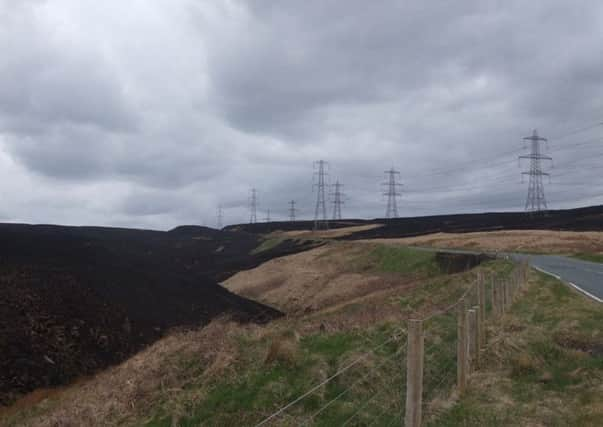Walkers key in battle to prevent moorland destruction, says Yorkshire Water


To reduce the risk of wildfires in the upper Calder Valley, The Moorland Fires Group has put up 116 new signs in the area encouraging people to report any sight of smoke or fires to the fire service immediately.
The moorlands in Calderdale are considered one of the most notorious areas for wildfires in Yorkshire. In each of the last seven years fires have broken out that have damaged 3,000 hectares of land, equivalent to the size of over 4,000 football pitches.
Advertisement
Hide AdAdvertisement
Hide AdSeveral of these fires have broken out on Yorkshire Water land, and the company, as part of The Moorland Fires Group, is playing a key role in raising awareness of wildfire risks.
Carol Prenton, Yorkshire Water’s Land and Property Surveyor, said: “The new signs remind people not to smoke or produce naked flames that could spark a potential wildfire.
“Wildfires are not only dangerous but devastate local ecosystems in many ways. For instance, the burning of land significantly reduces vegetation and peat quality, which results in loss of valuable habitat and wildlife such as birds, reptiles and insects.”
In 2013, the last major moorland fire in Calderdale damaged nearly 1,000 hectares of land in Soyland and Rishworth, the equivalent of 140 full-sized
Advertisement
Hide AdAdvertisement
Hide Adfootball pitches. Large areas of peat bog and mature heathland were destroyed along with numerous birds’ nests.
Carol Prenton added: “The source of much of the water we use in the North of England comes from the Pennine Moors’ catchment zones such as the Upper Calder Valley.
“The problem with wildfires is that they cause this land to dry out, which increases peat sediment getting into reservoirs and causes water colour problems. It is therefore vital that we limit their occurrences rather than having to keep paying more money to treat the water.”
Now considered rarer than rainforest, concern is growing around the condition of heather peatland throughout the UK, with climate change experts forecasting it to become increasingly warm and dry over the next fifty years - the worst possible conditions for peatland to thrive.
Advertisement
Hide AdAdvertisement
Hide AdEmma Fawcett, Natural England’s Adviser for the South Pennine Moors, said: “These moorlands support some of our rarest and most prized wildlife.
“Recent work has focused on restoring and enhancing these peatland habitats for current and future generations. Wildfire puts all this at risk and is a threat to the species living in these areas such as curlew, with its familiar haunting call, and the much smaller and rarer twite.”
Since 2010, Yorkshire Water has invested £9 million to protect and repair some of the region’s most iconic moorland areas and ensure high quality drinking water.